Lenovo 9953, 9946, 9935, 3656, 7061 User Manual
...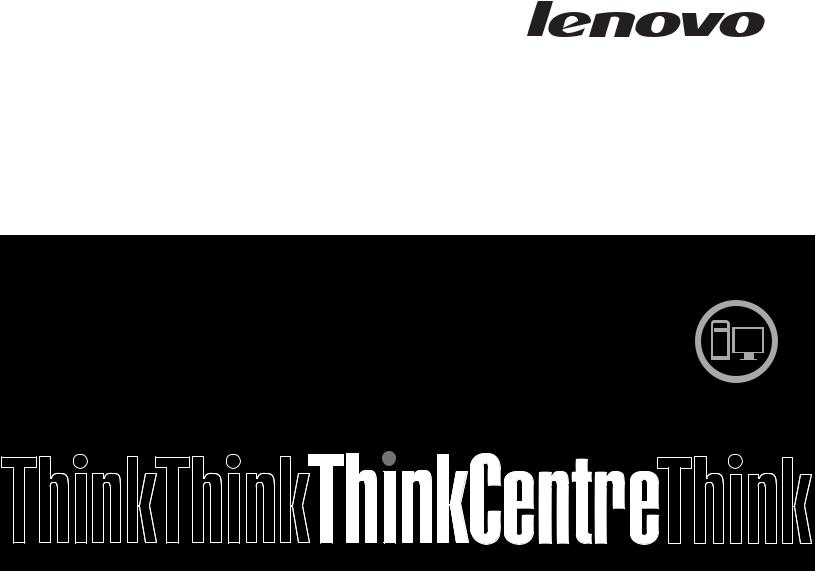
ThinkCentre
User Guide
Machine Types: 3656, 7061, 7090, 9353, 9421, 9485, 9623, 9625, 9705, 9795, 9935, 9946, and 9953

ThinkCentre
User Guide

Note
Before using this information and the product it supports, be sure to read and understand the ThinkCentre Safety and Warranty Guide and “Notices,” on page 77.
Second Edition (December 2009)
© Copyright Lenovo 2008, 2009.
LENOVO products, data, computer software, and services have been developed exclusively at private expense and are sold to governmental entities as commercial items as defined by 48 C.F.R. 2.101 with limited and restricted rights to use, reproduction and disclosure.
LIMITED AND RESTRICTED RIGHTS NOTICE: If products, data, computer software, or services are delivered pursuant a General Services Administration ″GSA″ contract, use, reproduction, or disclosure is subject to restrictions set forth in Contract No. GS-35F-05925.

Contents
Important safety information . . . . . |
. v |
Creating rescue media . . . . . . . . . |
. |
55 |
||
|
|
|
Using rescue media. . . . . . . . . . |
. |
56 |
|
Chapter 1. Product overview . . . . . |
. |
1 |
Creating and using a recovery repair diskette . . |
. 56 |
||
Features . . . . . . . . . . . . . . . |
. |
1 |
Creating a recovery repair diskette . . . . |
. |
57 |
|
Using a recovery repair diskette . . . . . |
. |
57 |
||||
Specifications . . . . . . . . . . . . . . |
4 |
|||||
Installing or reinstalling device drivers . . . . |
. |
57 |
||||
Software overview . . . . . . . . . . . |
. |
5 |
||||
Setting a rescue device in the startup sequence . |
. 58 |
|||||
Software provided with your Windows operating |
|
|||||
|
Solving recovery problems . . . . . . . . |
. |
58 |
|||
system . . . . . . . . . . . . . . . 5 |
||||||
|
|
|
||||
Antivirus software . . . . . . . . . . |
. |
7 |
Chapter 4. Using the Setup Utility . . |
. |
59 |
|
Locations . . . . . . . . . . . . . . |
. |
8 |
||||
Starting the Setup Utility program. . . . . . |
. 59 |
|||||
Locating connectors on the front of your computer |
8 |
|||||
Locating connectors on the rear of your computer |
9 |
Viewing and changing settings . . . . . . . |
. 59 |
|||
Locating components . . . . . . . . . |
. |
11 |
Using passwords . . . . . . . . . . . |
. |
59 |
|
Locating parts on the system board . . . . |
. |
12 |
Password considerations . . . . . . . . |
. |
60 |
|
Locating internal drives . . . . . . . . |
. |
12 |
User Password . . . . . . . . . . . |
. |
60 |
|
|
|
|
Administrator Password . . . . . . . . |
. |
60 |
|
Chapter 2. Installing or replacing |
|
|
Setting, changing, and deleting a password. . |
. 60 |
||
hardware . . . . . . . . . . . . . . 15 |
Enabling or disabling a device . . . . . . . |
. |
60 |
|||
Selecting a startup device. . . . . . . . . |
. |
61 |
||||
Handling static-sensitive devices . . . . . . |
. |
15 |
||||
Selecting a temporary startup device . . . . |
. |
61 |
||||
Installing or replacing hardware . . . . . . |
. |
15 |
||||
Selecting or changing the startup device sequence 62 |
||||||
Installing external options . . . . . . . |
. |
15 |
||||
Exiting from the Setup Utility program . . . . |
. 62 |
|||||
Removing the computer cover . . . . . . |
. 16 |
|||||
|
|
|
||||
Removing and reinstalling the front bezel . . |
. 18 |
Chapter 5. Updating system programs |
|
63 |
||
Installing or replacing a PCI card . . . . . |
. |
18 |
|
|||
Using system programs . . . . . . . . . |
. |
63 |
||||
Installing or replacing a memory module . . |
. 21 |
|||||
Updating (flashing) the BIOS from a diskette or disc |
63 |
|||||
Replacing the battery . . . . . . . . . |
. |
22 |
||||
Updating (flashing) the BIOS from your operating |
|
|
||||
Replacing the power supply assembly . . . |
. 24 |
|
|
|||
system . . . . . . . . . . . . . . . |
. 64 |
|||||
Replacing the heat sink and fan assembly . . |
. 25 |
|||||
Recovering from a POST/BIOS update failure . . |
. 64 |
|||||
Replacing the primary hard disk drive . . . |
. 27 |
|||||
|
|
|
||||
Replacing the secondary hard disk drive . . |
. 30 |
Chapter 6. Troubleshooting and |
|
|
||
Replacing the optical drive . . . . . . . |
. |
33 |
|
|
||
Replacing the diskette drive or card reader . . |
. 35 |
diagnostics . . . . . . . . . . . . |
. |
67 |
||
Replacing the front fan assembly . . . . . |
. |
37 |
Basic troubleshooting . . . . . . . . . . |
. |
67 |
|
Replacing the rear fan assembly . . . . . |
. |
38 |
Diagnostic programs . . . . . . . . . . |
. |
68 |
|
Replacing the front audio and USB assembly . |
. 40 |
Lenovo ThinkVantage Toolbox . . . . . . |
. 68 |
|||
Replacing the internal speaker . . . . . . |
. |
42 |
Lenovo System Toolbox . . . . . . . . |
. |
69 |
|
Replacing the keyboard . . . . . . . . |
. 43 |
PC-Doctor for Rescue and Recovery . . . . |
. 69 |
|||
Replacing the mouse . . . . . . . . . |
. |
45 |
PC-Doctor for DOS . . . . . . . . . . |
. |
70 |
|
Completing the parts replacement . . . . . |
. |
45 |
Cleaning the mouse . . . . . . . . . . |
. |
70 |
|
Installing security features . . . . . . . . |
. |
46 |
Optical mouse . . . . . . . . . . . |
. |
70 |
|
Integrated cable lock . . . . . . . . . |
. |
47 |
Non-optical mouse . . . . . . . . . . |
. |
71 |
|
Padlock. . . . . . . . . . . . . . . 48 |
|
|
|
|||
Password protection . . . . . . . . . |
. |
48 |
Chapter 7. Getting information, help, |
|
|
|
Erasing lost or forgotten passwords (clearing |
|
|
and service . . . . . . . . . . . . |
. 73 |
||
CMOS) . . . . . . . . . . . . . . . |
48 |
|||||
Information resources . . . . . . . . . . |
. |
73 |
||||
|
|
|
||||
Chapter 3. Recovery information . . . |
51 |
Online Books folder . . . . . . . . . |
. |
73 |
||
Lenovo ThinkVantage Tools . . . . . . . |
. |
73 |
||||
Creating and using recovery media . . . . . |
. 51 |
|||||
ThinkVantage Productivity Center . . . . . |
. 74 |
|||||
Creating recovery media . . . . . . . . |
. |
51 |
||||
Lenovo Welcome . . . . . . . . . . |
. |
74 |
||||
Using recovery media . . . . . . . . . |
. |
52 |
||||
Access Help . . . . . . . . . . . . |
. |
74 |
||||
Performing backup and recovery operations . . |
. 53 |
|||||
Safety and Warranty . . . . . . . . . |
. |
74 |
||||
Performing a backup operation . . . . . . |
. 53 |
|||||
Lenovo Web site (http://www.lenovo.com). . |
. 74 |
|||||
Performing a recovery operation . . . . . |
. |
53 |
||||
Help and service . . . . . . . . . . . |
. |
75 |
||||
Using the Rescue and Recovery workspace . . . . 54 |
||||||
|
|
|
||||
Creating and using rescue media . . . . . . |
. 55 |
|
|
|
||
© Copyright Lenovo 2008, 2009 |
|
|
|
|
iii |
|
Using the documentation and diagnostic |
|
|
|
Television output notice . . . . . |
. . |
. |
. |
. |
78 |
programs . . . . . . . . . . . . |
. |
. |
75 |
Trademarks . . . . . . . . . |
. . |
. |
. |
. |
78 |
Calling for service . . . . . . . . . |
. |
. |
75 |
|
|
|
|
|
|
Using other services . . . . . . . . |
. |
. |
76 |
Index . . . . . . . . . . |
. . |
. . |
. |
|
79 |
Purchasing additional services . . . . . |
. |
. |
76 |
|
|
|
|
|
|
Appendix. Notices . . . . . . . . . . 77
iv User Guide

Important safety information
CAUTION:
Before using this manual, be sure to read and understand all the related safety information for this product. Refer to the ThinkCentre Safety and Warranty Guide that you received with this product for the latest safety information. Reading and understanding this safety information reduces the risk of personal injury and or damage to your product.
If you no longer have a copy of the ThinkCentre Safety and Warranty Guide, you can obtain a Portable Document Format (PDF) version from the Lenovo® Support Web site at:
http://www.lenovo.com/support
© Copyright Lenovo 2008, 2009 |
v |
vi User Guide
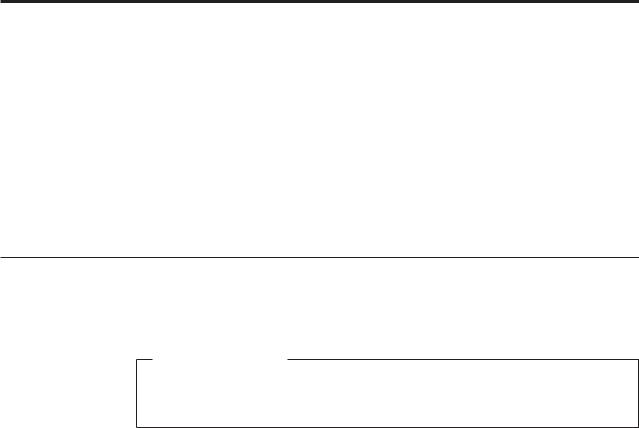
Chapter 1. Product overview
This chapter provides an introduction to the features and options that are available for your computer. You can expand the capabilities of your computer by adding memory modules, drives, or PCI cards. When installing or replacing an option, use these instructions along with the instructions that come with the option.
Important: Before you install or replace any option, be sure to read and understand the “Important safety information” first. These precautions and guidelines will help you work safely.
Note: Use only computer parts provided by Lenovo.
Features
This section provides an overview of the computer features and preinstalled software.
System information
The following information covers a variety of models. For information about your specific model, use the Setup Utility. See Chapter 4, “Using the Setup Utility,” on page 59.
Microprocessor
vAMD Athlon™ microprocessor
vAMD Phenom™ microprocessor
vAMD Sempron™ microprocessor
vInternal cache (size varies by model type)
Memory
vSupports up to four DDR2 DIMMs
(double data rate 2 dual inline memory modules)
vFlash memory for system programs (varies by model type)
Internal drives
vDiskette drive or card reader (varies by model type)
vSerial Advanced Technology Attachment (SATA) internal hard disk drive
vOptical drive (some models)
Video subsystem
vIntegrated graphics controller for a VGA (Video Graphics Array) connector and a Digital Visual Interface (DVI) connector (dual display supported)
vPCI Express x16 graphics card slot on the system board
Audio subsystem
vHigh Definition (HD) with Realtek ALC662
vMicrophone connector and headphone connector on the front panel
© Copyright Lenovo 2008, 2009 |
1 |
vAudio line-in connector, audio line-out connector, and microphone connector on the rear panel
vMono internal speaker
Connectivity
v10/100/1000 Mbps integrated Ethernet controller
vPeripheral Component Interconnect (PCI) V.90 Data/Fax modem (some models)
System management features
vAbility to store power-on self-test (POST) hardware test results
vASF 2.0 (Alert Standard Format Specification)
vAutomatic power-on startup
vPreboot Execution Environment (PXE) and Dynamic Host Configuration Protocol (DHCP)
vRemote Administration
vSystem Management (SM) BIOS and SM software
vWake on LAN
vWake on Ring (in the Setup Utility program, this feature is called Serial Port Ring Detect for an external modem)
Input/Output (I/O) features
v25-pin Extended Capabilities Port (ECP)/Extended Parallel Port (EPP)
v9-pin serial port (some models)
vDVI monitor connector
vEight USB (Universal Serial Bus) connectors (two on the front panel and six on the rear panel)
vEthernet connector
vOne external Serial Advanced Technology Attachment (eSATA) connector through PCI bracket (some models)
vPS/2® keyboard connector
vPS/2 mouse connector
vThree audio connectors (audio line-in connector, audio line-out connector, and microphone connector) on the rear panel
vTwo audio connectors (microphone connector and headphone connector) on the front panel
vVGA monitor connector
Expansion
vThree drive bays
vTwo 32-bit PCI card slots
vOne PCI Express x1 card slot
vOne PCI Express x16 graphics card slot
Power
v280-watt auto-sensing power supply (some models)
vAutomatic 50/60 Hz input frequency switching
vAdvanced Configuration and Power Interface (ACPI) support
2 User Guide

Security features
vCover presence switch (also called intrusion switch) (some models)
vDiskette and hard disk drive I/O control
vKeyboard with fingerprint reader (some models)
vStartup sequence control
vStartup without diskette drive, keyboard, or mouse
vSerial port and parallel port I/O control
vSupport for the addition of an integrated cable lock (Kensington lock)
vUser and administrator passwords for BIOS access
vUnattended start mode
Preinstalled software
Your computer might come with preinstalled software. If it does, an operating system, device drivers to support built-in features, and other support programs are included.
Operating system, preinstalled
vMicrosoft® Windows® 7
vMicrosoft Windows Vista®
vMicrosoft Windows XP Professional
(preinstalled through downgrade rights in Windows 7 Professional, Windows Vista Business, or Windows Vista Ultimate)
Operating system(s), certified or tested for compatibility1 (varies by model type) v Linux®
1.The operating system(s) listed here are being certified or tested for compatibility at the time this publication goes to press. Additional operating systems might be identified by Lenovo as compatible with your computer following the publication of this manual. This list is subject to change. To determine if an operating system has been certified or tested for compatibility, check the Web site of the operating system vendor.
Chapter 1. Product overview 3

Specifications
This section lists the physical specifications for your computer.
Dimensions
Width: 175 mm (6.9 inches)
Height: 402 mm (15.8 inches)
Depth: 440 mm (17.3 inches)
Weight
Maximum configuration as shipped: 11 kg (24 lbs)
Environment
Air temperature:
Operating: 10° to 35°C (50° to 95°F)
Non-operating: -40° to 60°C (-40° to 140°F)
Humidity:
Operating: 10% to 80% (10% per hour, non condensing)
Non-operating: 10% to 90% (10% per hour, non condensing)
Maximum altitude:
Operating: -50 to 10 000 ft (-15.2 to 3 048 m)
Non-operating: -50 to 35 000 ft (-15.2 to 10 668 m)
Electrical input
Input voltage:
Low range:
Minimum: 100 V ac
Maximum: 127 V ac
Input frequency range: 50/60 Hz
Voltage-selection switch setting: 115 V ac
High range:
Minimum: 200 V ac
Maximum: 240 V ac
Input frequency range: 50/60 Hz
Voltage-selection switch setting: 230 V ac
4 User Guide

Software overview
The computer comes with a preinstalled operating system and several preinstalled applications.
Software provided with your Windows operating system
This section describes the Windows applications provided with your computer.
Software provided by Lenovo
The following software applications are provided by Lenovo to help you improve productivity and reduce the cost associated with maintaining your computer. Software provided with your computer may vary depending on your model type.
Lenovo ThinkVantage Tools: The Lenovo ThinkVantage® Tools program guides you to a host of information sources and provides easy access to various tools to help you work more easily and securely. For more information, see “Lenovo ThinkVantage Tools” on page 73.
Note: The Lenovo ThinkVantage Tools program is only available on computers with the Windows 7 operating system from Lenovo.
ThinkVantage Productivity Center: The ThinkVantage Productivity Center program guides you to a host of information and tools to help you set up, understand, maintain, and enhance your computer.
Note: The ThinkVantage Productivity Center program is only available on computers preinstalled with the Windows Vista operating system or the Windows XP operating system from Lenovo.
Lenovo Welcome: The Lenovo Welcome program introduces you to some innovative built-in features of Lenovo and guides you through a few important setup tasks to help you make the most of your computer.
Note: The Lenovo Welcome program is only available on computers preinstalled with the Windows 7 operating system from Lenovo.
ThinkVantage Rescue and Recovery: The ThinkVantage Rescue and Recovery® (RnR) program is a one button recovery and restore solution that includes a set of self-recovery tools to help you diagnose computer problems, get help, and recover from system crashes quickly, even if the primary operating system could not start.
ThinkVantage Client Security Solution: The ThinkVantage Client Security Solution program is available on select Lenovo computers. It helps protect your information, including vital security information like passwords, encryption keys, and electronic credentials, while guarding against unauthorized user access to data.
Note: The ThinkVantage Client Security Solution program is only available on computers preinstalled with the Windows Vista operating system or the Windows XP operating system from Lenovo.
Password Manager: The Password Manager program helps you automatically capture and fill in authentication information for Windows applications and Web sites.
Note: The Password Manager program is only available on computers preinstalled with the Windows 7 operating system from Lenovo.
Chapter 1. Product overview 5
Power Manager: The Power Manager program provides convenient, flexible, and complete power management for your ThinkCentre® computer. By using the Power Manager program, you can adjust your power settings to achieve the best balance between system performance and power saving.
Factory Recovery: The Factory Recovery program enables you to restore the contents of the hard disk drive to the factory default settings.
ThinkVantage System Update: The ThinkVantage System Update (TVSU) program helps you keep the software on your computer up-to-date by downloading and installing software packages (ThinkVantage applications, device drivers, BIOS updates, and other third party applications). Some examples of software that you should keep updated are programs provided by Lenovo, such as the Rescue and Recovery program and the ThinkVantage Productivity Center program.
Fingerprint Software: The integrated fingerprint reader provided on some keyboards works with the Fingerprint Software program to enable you to enroll your fingerprint and associate it with your Windows password. As a result, fingerprint authentication can replace your password and enable simple and secure user access. A fingerprint reader keyboard is available with certain computers or can be purchased for computers that support this option.
Lenovo ThinkVantage Toolbox
The Lenovo ThinkVantage Toolbox program helps you maintain your computer, improve computing security, diagnose computer problems, get familiar with the innovative technologies provided by Lenovo, and get more information about your computer. See “Lenovo ThinkVantage Toolbox” on page 68 for detailed information.
Note: The Lenovo ThinkVantage Toolbox program is only available on computers preinstalled with the Windows 7 operating system from Lenovo.
Lenovo System Toolbox
The Lenovo System Toolbox program is preinstalled on your computer. This diagnostic program works through the Windows operating system to diagnose hardware problems and report operating-system-controlled settings that can cause hardware failures. See “Lenovo System Toolbox” on page 69 for more information.
Note: The Lenovo System Toolbox program is only available on computers preinstalled with the Windows Vista operating system or the Windows XP operating system from Lenovo.
PC-Doctor for Rescue and Recovery
The PC-Doctor for Rescue and Recovery diagnostic program is preinstalled on your ThinkCentre computer as part of the Rescue and Recovery workspace. It helps you diagnose hardware problems and report operating-system-controlled settings that can cause hardware failures. Use the PC-Doctor for Rescue and Recovery program if you are unable to start the Windows operating system. For more information, see “PC-Doctor for Rescue and Recovery” on page 69.
Adobe Reader
The Adobe Reader program is a tool used to view, print, and search PDF documents.
See “Online Books folder” on page 73 for more information about accessing the online books and the Lenovo Web site.
6 User Guide
Antivirus software
Your computer comes with antivirus software that you can use to detect and eliminate viruses. Lenovo provides a full version of antivirus software on your computer with a free 30-day subscription. After 30 days, you must renew the license to continue receiving the antivirus software updates.
For more information about how to use your antivirus software, refer to the help system of your antivirus software.
Chapter 1. Product overview 7
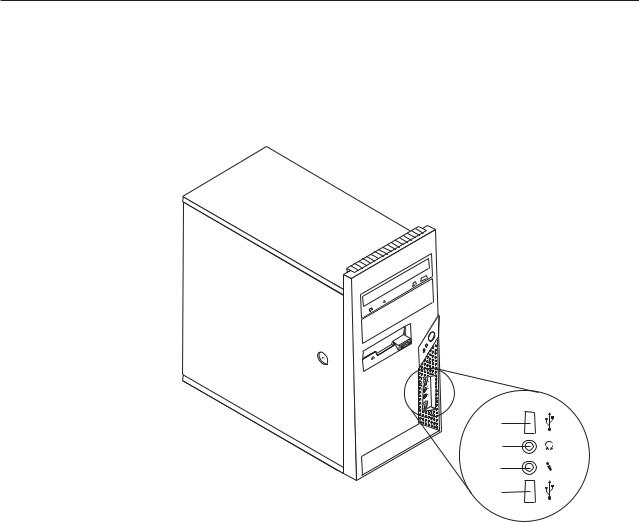
Locations
This section provides information to help you locate your computer connectors, components, parts on the system board, and internal drives.
Locating connectors on the front of your computer
Figure 1 shows the location of the connectors on the front of your computer.
Figure 1. Front connector locations |
|
|
|
|
|
|
|
|
|
|
|
|
|
|
|
|
|
|
|
|
|
|
|
|
|
|
|
|
|
|
|
1 USB connector |
3 Microphone connector |
||
2 Headphone connector |
4 USB connector |
||
8 User Guide
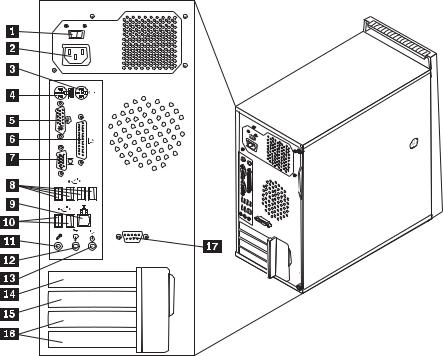
Locating connectors on the rear of your computer
Figure 2 shows the location of the connectors on the rear of your computer. Some connectors on the rear of your computer are color-coded to help you determine where to connect the cables on your computer.
Figure 2. Rear connector locations
1 Voltage selection switch (some models) 2 Power cord connector
3 PS/2 mouse connector 4 PS/2 keyboard connector 5 DVI monitor connector 6 Parallel port
7 VGA monitor connector 8 USB connectors (4)
9 Ethernet connector
10 USB connectors (2) 11 Microphone connector
12 Audio line-out connector 13 Audio line-in connector 14 PCI Express x1 card slot
15 PCI Express x16 graphics card slot 16 PCI card slots (2)
17 Serial port (some models)
Chapter 1. Product overview 9
Connector |
Description |
Audio line-in connector |
Used to receive audio signals from an external audio device, |
|
such as a stereo system. When you attach an external audio |
|
device, a cable is connected between the audio line-out |
|
connector of the device and the audio line-in connector of the |
|
computer. |
Audio line-out connector |
Used to send audio signals from the computer to external |
|
devices, such as powered stereo speakers (speakers with |
|
built-in amplifiers), headphones, multimedia keyboards, or the |
|
audio line-in connector on a stereo system or other external |
|
recording devices. |
DVI monitor connector |
Used to attach a DVI monitor or other devices that use a DVI |
|
monitor connector. |
Ethernet connector |
Used to attach an Ethernet cable for a local area network |
|
(LAN). |
|
Note: To operate the computer within FCC Class B limits, use |
|
a Category 5 Ethernet cable. |
Microphone connector |
Used to attach a microphone to your computer when you want |
|
to record sound or if you use speech-recognition software. This |
|
connector might be located on the front of the computer. |
Parallel port |
Used to attach a parallel printer, a parallel scanner, or other |
|
devices that use a 25-pin parallel port. |
Serial port |
Used to attach an external modem, a serial printer, or other |
|
devices that use a 9-pin serial port. |
PS/2 keyboard connector |
Used to attach a keyboard that uses a PS/2 keyboard |
|
connector. |
PS/2 mouse connector |
Used to attach a mouse, trackball, or other pointing devices |
|
that use a PS/2 mouse connector. |
USB connector |
Used to attach a device that requires a Universal Serial Bus |
|
(USB) connector, such as a USB keyboard, a USB mouse, a USB |
|
scanner, or a USB printer. If you have more than eight USB |
|
devices, you can purchase a USB hub, which you can use to |
|
connect additional USB devices. |
VGA monitor connector |
Used to attach a VGA monitor or other devices that use a VGA |
|
monitor connector. |
10 User Guide
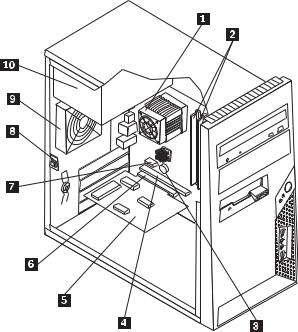
Locating components
To remove the computer cover, see “Removing the computer cover” on page 16. Figure 3 shows the location of the various components in your computer.
Figure 3. Component locations
1 Heat sink and fan assembly 2 Memory modules
3 Battery
4 PCI Express x16 graphics card slot 5 PCI card (installed in some models)
6 PCI card slot
7 PCI Express x1 card slot
8 Cover presence (Intrusion) switch 9 Rear fan assembly
10 Power supply assembly
Chapter 1. Product overview 11
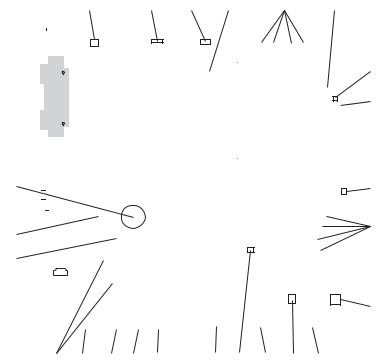
Locating parts on the system board
Figure 4 shows the location of the parts on the system board.
|
|
|
|
|
|
|
|
|
|
|
|
|
|
|
|
|
|
|
|
|
|
|
|
|
|
|
|
|
|
|
|
|
|
|
|
|
|
|
|
|
|
|
|
|
|
|
|
|
|
|
|
|
|
|
|
|
|
|
|
|
|
|
|
|
|
|
|
|
|
|
|
|
|
|
|
|
|
|
|
|
|
|
|
|
|
|
|
|
|
|
|
|
|
|
|
|
|
|
|
|
|
|
|
|
|
|
|
|
|
|
|
|
|
|
|
|
|
|
|
|
|
|
|
|
|
|
|
|
|
|
|
|
|
|
|
|
|
|
|
|
|
|
|
|
|
|
|
|
|
|
|
|
|
|
|
|
|
|
|
|
|
|
|
|
|
|
|
|
|
|
|
|
|
|
|
|
|
|
|
|
|
|
|
|
|
|
|
|
|
|
|
|
|
|
|
|
|
|
|
|
|
|
|
|
|
|
|
|
|
|
|
|
|
|
|
|
|
|
|
|
|
|
|
|
|
|
|
|
|
|
|
|
|
|
|
|
|
|
|
|
|
|
|
|
|
|
|
|
|
|
|
|
|
|
|
|
|
|
|
|
|
|
|
|
|
|
|
|
|
|
|
|
|
|
|
|
|
|
|
|
|
|
|
|
|
|
|
|
|
|
|
|
|
|
|
|
|
|
|
|
|
|
|
|
|
|
|
|
|
|
|
|
|
|
|
|
|
|
|
|
|
|
|
|
|
|
|
|
|
|
|
|
|
|
|
|
|
|
|
|
|
|
|
|
|
|
|
|
|
|
|
|
|
|
|
|
|
|
|
|
|
|
|
|
|
|
|
|
|
|
|
|
|
|
|
|
|
|
|
|
|
|
|
|
|
|
|
|
|
|
|
|
|
|
|
|
|
|
|
|
|
|
|
|
|
|
|
|
|
|
|
|
|
|
|
|
|
|
|
|
|
|
|
|
|
|
|
|
|
|
|
|
|
|
|
|
|
|
|
|
|
|
|
|
|
|
|
|
|
|
|
|
|
|
|
|
|
|
|
|
|
|
|
|
|
|
|
|
|
|
|
|
|
|
|
|
|
|
|
|
|
|
|
|
|
|
|
|
|
|
|
|
|
|
|
|
|
|
|
|
|
|
|
|
|
|
|
|
|
|
|
|
|
|
|
|
|
|
|
|
|
|
|
|
|
|
|
|
|
|
|
|
|
|
|
|
|
|
|
|
|
|
|
|
|
|
|
|
|
|
|
|
|
|
|
|
|
|
|
|
|
|
|
|
|
|
|
|
|
|
|
|
|
|
|
|
|
|
|
|
|
|
|
|
|
|
|
|
|
|
|
|
|
|
|
|
|
|
|
|
|
|
|
|
|
|
|
|
|
|
|
|
|
|
|
|
|
|
|
|
|
|
|
|
|
|
|
|
|
|
|
|
|
|
|
|
|
|
|
|
|
|
|
|
|
|
|
|
|
|
|
|
|
|
|
|
|
|
|
|
|
|
|
|
|
|
|
|
|
|
|
|
|
|
|
|
|
|
|
|
|
|
|
|
|
|
|
|
|
|
|
|
|
|
|
|
|
|
|
|
|
|
|
|
|
|
|
|
|
|
|
|
|
|
|
|
|
|
|
|
|
|
|
|
|
|
|
|
|
|
|
|
|
|
|
|
|
|
|
|
|
|
|
|
|
|
|
|
|
|
|
|
|
|
|
|
|
|
|
|
|
|
|
|
|
|
|
|
|
|
|
|
|
|
|
|
|
|
|
|
|
|
|
|
|
|
|
|
|
|
|
|
|
|
|
|
|
|
|
|
|
|
|
|
|
|
|
|
|
|
|
|
|
|
|
|
|
|
|
|
|
|
|
|
|
|
|
|
|
|
|
|
|
|
|
|
|
|
|
|
|
|
|
|
|
|
|
|
|
|
|
|
|
|
|
|
|
|
|
|
|
|
|
|
|
|
|
|
|
|
|
|
|
|
|
|
|
|
|
|
|
|
|
|
|
|
|
|
|
|
|
|
|
|
|
|
|
|
|
|
|
|
|
|
|
|
|
|
|
|
|
|
|
|
|
|
|
|
|
|
|
|
|
|
|
|
|
|
|
|
|
|
|
|
|
|
|
|
|
|
|
|
|
|
|
|
|
|
|
|
|
|
|
|
|
|
|
|
|
|
|
|
|
|
|
|
|
|
|
|
|
|
|
|
|
|
|
|
|
|
|
|
|
|
|
|
|
|
|
|
|
|
|
|
|
|
|
|
|
|
|
|
|
|
|
|
|
|
|
|
|
|
|
|
|
|
|
|
|
|
|
|
|
|
|
|
|
|
|
|
|
|
|
|
|
|
|
|
|
|
|
|
|
|
|
|
|
|
|
|
|
|
|
|
|
|
|
|
|
|
|
|
|
|
|
|
|
|
|
|
|
|
|
|
|
|
|
|
|
|
|
|
|
|
|
|
|
|
|
|
|
|
|
|
|
|
|
|
|
|
|
|
|
|
|
|
|
|
|
|
|
|
|
|
|
|
|
|
|
|
|
|
|
|
|
|
|
|
|
|
|
|
|
|
|
|
|
|
|
|
|
|
|
|
|
|
|
|
|
|
|
|
|
|
|
|
|
|
|
|
|
|
|
|
|
|
|
|
|
|
|
|
|
|
|
|
|
|
|
|
|
|
|
|
|
|
|
|
|
|
|
|
|
|
|
|
|
|
|
|
|
|
|
|
|
|
|
|
|
|
|
|
|
|
|
|
|
|
|
|
|
|
|
|
|
|
|
|
|
|
|
|
|
|
|
|
|
|
|
|
|
|
|
|
|
|
|
|
|
|
|
|
|
|
|
|
|
|
|
|
|
|
|
|
|
|
|
|
|
|
|
|
|
|
|
|
|
|
|
|
|
|
|
|
|
|
|
|
|
|
|
|
|
|
|
|
|
|
|
|
|
|
|
|
|
|
|
|
|
|
|
|
|
|
|
|
|
|
|
|
|
|
|
|
|
|
|
|
|
|
|
|
|
|
|
|
|
|
|
|
|
|
|
|
|
|
|
|
|
|
|
|
|
|
|
|
|
|
|
|
|
|
|
|
|
|
|
|
|
|
|
|
|
|
|
|
|
|
|
|
|
|
|
|
|
|
|
|
|
|
|
|
|
|
|
|
|
|
|
|
|
|
|
|
|
|
|
|
|
|
|
|
|
|
|
|
|
|
|
|
|
|
|
|
|
|
|
|
|
|
|
|
|
|
|
|
|
|
|
|
|
|
|
|
|
|
|
|
|
|
|
|
|
|
|
|
|
|
|
|
|
|
|
|
|
|
|
|
|
|
|
|
|
|
|
|
|
|
|
|
|
|
|
|
|
|
|
|
|
|
|
|
|
|
|
|
|
|
|
|
|
|
|
|
|
|
|
|
|
|
|
|
|
|
|
|
|
|
|
|
|
|
|
|
|
|
|
|
|
|
|
|
|
|
|
|
|
|
|
|
|
|
|
|
|
|
|
|
|
|
|
|
|
|
|
|
|
Figure 4. System board parts locations |
|
|
|
|
|
|
|
|
|
|
|
|
|
|
|
|
|
|
|
|
|
|
|||||||||||||||
1 4-pin power connector |
|
13 Internal speaker connector |
|||||||||||||||||||||||||||||||||||
2 System fan connector |
|
14 Front USB connector 2 |
|||||||||||||||||||||||||||||||||||
3 Microprocessor fan connector |
|
15 Clear CMOS (Complementary Metal-Oxide |
|||||||||||||||||||||||||||||||||||
|
|
|
|
|
|
|
|
|
|
|
|
|
|
|
|
|
Semiconductor)/Recovery jumper |
||||||||||||||||||||
4 Microprocessor and heat sink |
|
16 Front USB connector 1 |
|||||||||||||||||||||||||||||||||||
5 Memory slots (4) |
|
17 Serial (COM2) connector |
|||||||||||||||||||||||||||||||||||
6 24-pin power connector |
|
18 Serial (COMl) connector |
|||||||||||||||||||||||||||||||||||
7 Thermal sensor connector |
|
19 CD-IN connector |
|||||||||||||||||||||||||||||||||||
8 Diskette drive connector |
|
20 Front audio connector |
|||||||||||||||||||||||||||||||||||
9 Cover presence (Intrusion) switch |
|
21 PCI card slots (2) |
|||||||||||||||||||||||||||||||||||
connector |
|
|
|
|
|
|
|
|
|
|
|
|
|
|
|
|
|
|
|
|
|
|
|||||||||||||||
10 SATA connectors (4) |
|
22 PCI Express x16 graphics card slot |
|||||||||||||||||||||||||||||||||||
11 Power fan connector |
|
23 PCI Express x1 card slot |
|||||||||||||||||||||||||||||||||||
12 Front panel connector |
|
24 Battery |
|||||||||||||||||||||||||||||||||||
Locating internal drives
Internal drives are devices that your computer uses to read and store data. You can add drives to your computer to increase storage capacity and enable your computer to read other types of media. Internal drives are installed in bays. In this manual, the bays are referred to as bay 1, bay 2, and so on.
When installing or replacing an internal drive, it is important to note the type and size of the drive that you can install or replace in each bay and correctly connect
12 User Guide
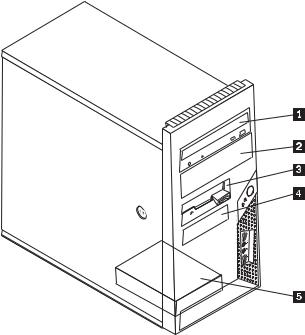
the cables to the drive installed. Refer to the appropriate section in Chapter 2, “Installing or replacing hardware,” on page 15 for instructions on how to install or replace internal drives for your computer.
Figure 5 shows the locations of the drive bays.
Figure 5. Drive bay locations
1 Bay 1 - Optical drive bay (with an optical drive installed) 2 Bay 2 - Optical drive bay
3 Bay 3 - Diskette drive or card reader (available in some models)
4 Bay 4 - Primary SATA hard disk drive bay (with a 3.5-inch SATA hard disk drive installed)
5 Bay 5 - Secondary SATA hard disk drive bay (with a 3.5-inch SATA hard disk drive installed in some models)
Chapter 1. Product overview 13
14 User Guide

Chapter 2. Installing or replacing hardware
This chapter provides instructions on how to install or replace hardware for your computer.
Handling static-sensitive devices
Do not open the static-protective package containing the new part until the defective part has been removed from the computer and you are ready to install the new part. Static electricity, although harmless to you, can seriously damage computer components and parts.
When you handle parts and other computer components, take these precautions to avoid static-electricity damage:
vLimit your movement. Movement can cause static electricity to build up around you.
vAlways handle parts and other computer components carefully. Handle adapter cards, memory modules, system boards, and microprocessors by the edges. Never touch any exposed circuitry.
vPrevent others from touching the parts and other computer components.
vBefore you replace a new part, touch the static-protective package containing the part to a metal expansion-slot cover or other unpainted metal surface on the computer for at least two seconds. This reduces static electricity in the package and your body.
vWhen possible, remove the new part from the static-protective packaging, and install it directly in the computer without setting the part down. When this is not possible, place the static-protective package that the part came in on a smooth, level surface and place the part on it.
vDo not place the part on the computer cover or other metal surface.
Installing or replacing hardware
This section provides instructions on how to install or replace hardware for your computer. You can expand the capabilities of your computer by adding memory modules, PCI cards, or drives, and maintain your computer by replacing the failing hardware.
Notes:
1.Use only computer parts provided by Lenovo.
2.When installing or replacing an option, use the appropriate instructions in this section along with the instructions that come with the option.
Installing external options
External speakers, a printer, or a scanner can be connected to your computer. For some external options, you must install additional software in addition to making the physical connection. When installing an external option, see “Locating connectors on the front of your computer” on page 8 and “Locating connectors on the rear of your computer” on page 9 to identify the required connector, and then use the instructions that come with the option to help you make the connection and install any software or device drivers that are required for the option.
© Copyright Lenovo 2008, 2009 |
15 |
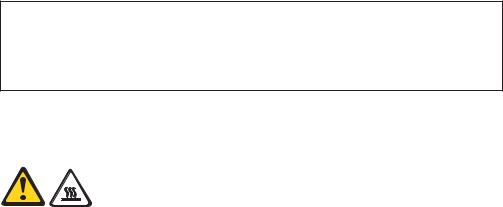
Removing the computer cover
Attention
Do not open your computer or attempt any repair before reading and understanding the “Important safety information” in the ThinkCentre Safety and Warranty Guide that came with your computer. To obtain a copy of the ThinkCentre Safety and Warranty Guide, go to: http://www.lenovo.com/support
This section provides instructions on how to remove the computer cover.
CAUTION:
Turn off the computer and wait three to five minutes to let the computer cool before removing the computer cover.
To remove the computer cover:
1.Remove any media from the drives, shut down your operating system, and turn off all attached devices and the computer.
2.Unplug all power cords from electrical outlets.
3.Disconnect the cables attached to the computer. This includes power cords, Input/Output (I/O) cables, and any other cables that are connected to the computer. See “Locating connectors on the front of your computer” on page 8 and “Locating connectors on the rear of your computer” on page 9.
4.Remove any locking devices, such as a cable lock that secures the computer cover.
5.If there are thumbscrews that secure the computer cover, remove them.
16 User Guide
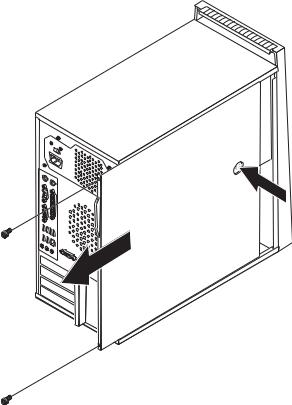
6.Press the cover-release button on the side of the computer cover and slide the computer cover to the rear to remove.
Figure 6. Removing the computer cover
Chapter 2. Installing or replacing hardware 17

Removing and reinstalling the front bezel
This section provides instructions on how to remove and reinstall the front bezel.
To remove and reinstall the front bezel:
1.Remove all media from the drives and turn off all attached devices and the computer. Then, disconnect all power cords from electrical outlets and disconnect all cables that are connected to the computer.
2.Remove the computer cover. See “Removing the computer cover” on page 16.
3.Remove the front bezel by releasing the three plastic tabs on the left side and pivoting the front bezel outward. Carefully set the front bezel to the side without disconnecting the power switch and LED assembly cable.
Figure 7. Removing the front bezel
4.To reinstall the front bezel, align the plastic tabs on the right side of the front bezel with the corresponding holes in the chassis, then pivot the front bezel inward until it snaps into position on the left side.
5.To complete the installation, go to “Completing the parts replacement” on page 45.
Installing or replacing a PCI card
Attention
Do not open your computer or attempt any repair before reading and understanding the “Important safety information” in the ThinkCentre Safety and Warranty Guide that came with your computer. To obtain a copy of the ThinkCentre Safety and Warranty Guide, go to: http://www.lenovo.com/support
This section provides instructions on how to install or replace a PCI card. Your computer has two standard PCI card slots, one PCI Express x1 card slot, and one PCI Express x16 graphics card slot.
18 User Guide
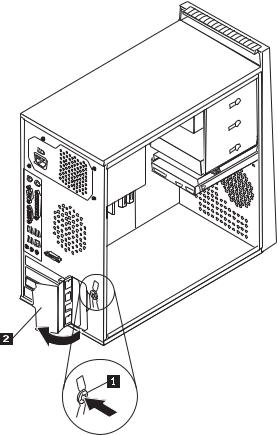
To install or replace a PCI card, do the following:
1.Remove all media from the drives and turn off all attached devices and the computer. Then, disconnect all power cords from electrical outlets and disconnect all cables that are connected to the computer.
2.Remove the computer cover. See “Removing the computer cover” on page 16.
3.At the rear of the computer, press the release button 1 to open the PCI card latch 2 and remove the slot cover.
Figure 8. Opening the PCI card latch
4.If you are installing a PCI card, remove the appropriate PCI card slot cover. If you are replacing a PCI card, locate the appropriate PCI card slot on the system board and remove the old PCI card that is currently installed.
Notes:
a.The PCI card fits tightly into the PCI card slot. If necessary, alternate moving each side of the PCI card a small and equal amount until it is completely removed from the PCI card slot.
Chapter 2. Installing or replacing hardware 19
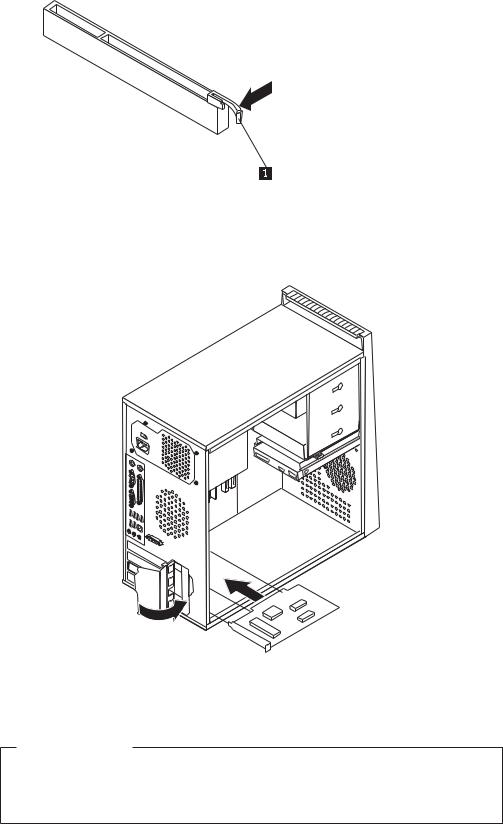
b.If the PCI card is secured in place by a retaining latch 1, press the retaining latch to release the PCI card from the latch. Then, grasp the PCI card by the edges and carefully pull it out of the slot.
5.Remove the PCI card from its static-protective package.
6.Install the new PCI card into the appropriate PCI card slot on the system board. Then, pivot the PCI card latch to the closed position to secure the PCI cards.
Figure 9. Closing the PCI card latch
7. Reinstall all parts and reconnect all cables that have been removed.
What to do next:
vTo work with another option, go to the appropriate section.
vTo complete the installation, go to “Completing the parts replacement” on page 45.
20 User Guide
